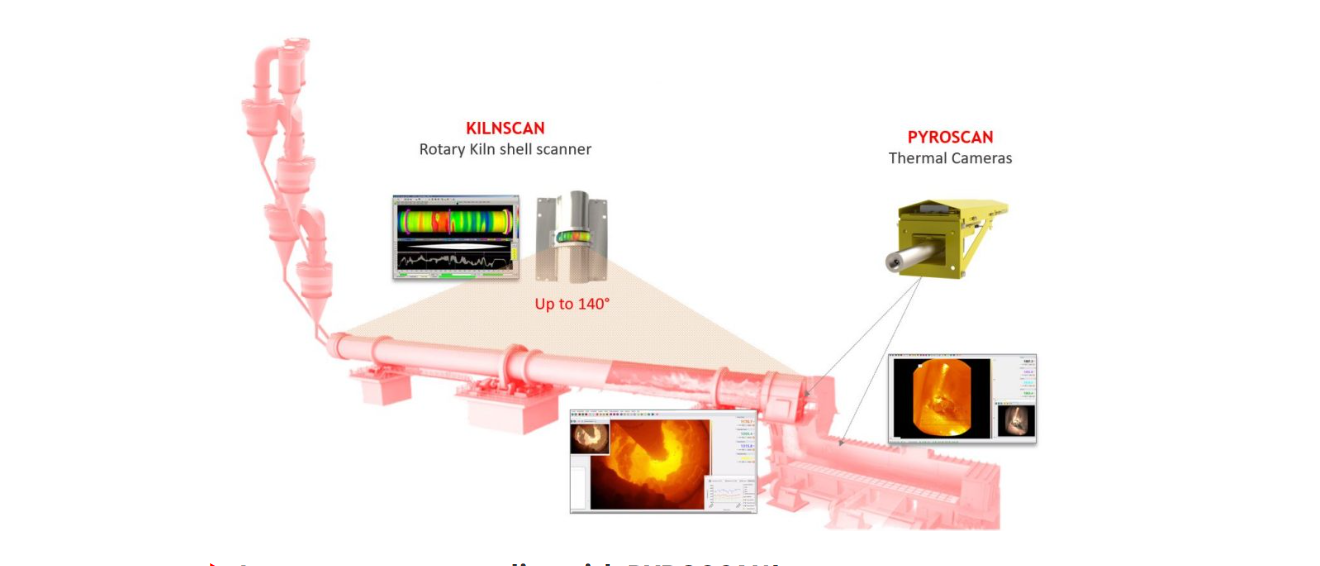Contents
Cement Kiln Maintenance: Practical Steps, Tools, and Case Studies

Maintaining a cement kiln is critical for ensuring optimal operation and longevity. This guide provides a comprehensive, step-by-step approach to cement kiln maintenance, covering preventive, predictive, and periodic maintenance practices. We also explore the use of AI in maintenance strategies and offer real-life case studies for context.
Table of Contents
- Introduction
- Tools and Equipment Required
- Workforce and Cost Estimation
- Preventive Maintenance
- Predictive Maintenance
- Periodic Maintenance
- Using AI for Cement Kiln Maintenance
- Case Studies
- References
1. Introduction
Cement kiln maintenance is vital for ensuring efficient and uninterrupted production. Proper maintenance helps in preventing unexpected downtimes, prolonging equipment life, and reducing operational costs.
2. Tools and Equipment Required
Basic Tools
- Wrenches (various sizes)
- Screwdrivers
- Hammers
- Pliers
- Measuring tapes
- Levels
Advanced Equipment
- Infrared thermometers
- Vibration analyzers
- Ultrasonic testers
- Laser alignment tools
- Hydraulic jacks
- Bearing pullers
Specialized Brands and Models
- FLIR E8 (Infrared Thermometer)
- SKF CMAS 100-SL (Vibration Analyzer)
- UE Systems Ultraprobe 100 (Ultrasonic Tester)
- PRUFTECHNIK OPTALIGN SMART (Laser Alignment Tool)
3. Workforce and Cost Estimation
Required Workforce
- Maintenance Manager: 1
- Mechanical Technicians: 3-5
- Electrical Technicians: 2-3
- Helpers/Laborers: 5-7
Estimated Cost
- Tools and Equipment: $50,000 – $70,000
- Labor Costs (annual): $300,000 – $500,000
- Training and Safety: $10,000 – $20,000
4. Preventive Maintenance
Steps for Preventive Maintenance
- Routine Inspections: Conduct daily checks on kiln shell, tyres, and rollers.
- Lubrication: Regularly lubricate bearings, gears, and other moving parts.
- Cleaning: Remove build-up of dust and other materials from critical components.
- Component Replacement: Replace worn-out parts like seals, liners, and refractory bricks.
Example
- Kiln Tyre and Roller Inspection: Inspect tyres and rollers weekly for wear and proper alignment using a laser alignment tool. Lubricate the bearings monthly.
5. Predictive Maintenance
Steps for Predictive Maintenance
- Data Collection: Use sensors to collect data on temperature, vibration, and acoustics.
- Analysis: Analyze data to identify trends and predict failures.
- Intervention: Perform maintenance based on predictive analytics before failure occurs.
Example
- Vibration Analysis: Use SKF CMAS 100-SL to monitor vibration levels of the kiln’s rotating parts. Schedule bearing replacements when vibration levels indicate impending failure.
6. Periodic Maintenance
Steps for Periodic Maintenance
- Detailed Inspections: Conduct thorough inspections of all kiln components every 6-12 months.
- Major Repairs: Perform significant repairs like refractory relining, gear replacements, and major overhauls.
- Alignment Checks: Ensure proper alignment of the kiln and its components.
Example
- Refractory Relining: Plan for a shutdown every 1-2 years for refractory relining. Inspect the kiln’s interior, remove old refractory, and install new refractory material.
7. Using AI for Cement Kiln Maintenance
Practical Use of AI
- Data Integration: Collect data from various sensors and integrate it into an AI-based platform.
- Predictive Models: Use AI algorithms to develop predictive models for equipment failures.
- Real-time Monitoring: Implement real-time monitoring systems that alert maintenance teams of potential issues.
- Decision Support: Use AI to provide decision support for maintenance scheduling and resource allocation.
Example
- AI-Based Predictive Maintenance: Use a platform like IBM Maximo for real-time monitoring and predictive analytics. The AI can predict potential failures based on historical data and sensor inputs, enabling preemptive maintenance actions.
8. Case Studies
Case Study 1: Holcim Ltd.
Holcim implemented a predictive maintenance system using SKF’s condition monitoring tools. They reduced unplanned downtime by 20% and increased the lifespan of critical components by 15%.
Case Study 2: LafargeHolcim
LafargeHolcim used AI and IoT solutions to monitor and analyze kiln performance. This approach led to a 25% reduction in maintenance costs and a 10% increase in overall efficiency.
Case Study 3: CEMEX
CEMEX integrated real-time monitoring and AI-based predictive maintenance across their cement plants. The implementation resulted in a 30% decrease in unexpected shutdowns and a significant improvement in operational reliability.
9. References
- “Maintenance Management in Cement Plants,” Cement Equipment Corp.
- “The Role of AI in Predictive Maintenance,” IBM Watson IoT.
- “SKF Predictive Maintenance Solutions,” SKF Group.
- “Case Study: Holcim Ltd.,” SKF.
- “Refractory Material Selection for Cement Kilns,” The Refractory Handbook.
By following the comprehensive steps outlined in this guide, cement plant operators can ensure their kilns operate efficiently, reduce downtime, and extend the life of critical components. Implementing AI for predictive maintenance can further enhance these benefits by providing advanced insights and proactive maintenance capabilities